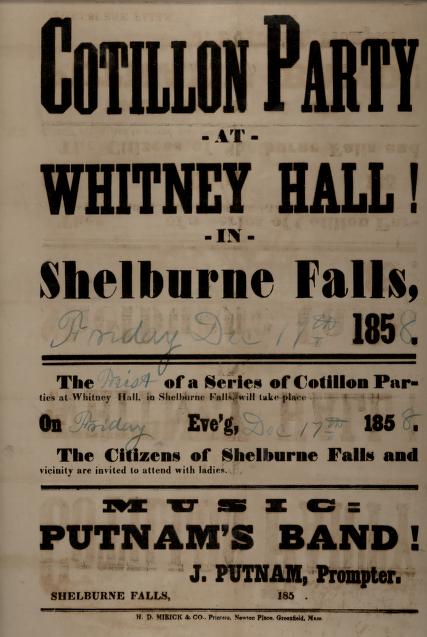Send an E-Postcard of:
"Cotillion Party at Whitney Hall! In Shelburne Falls, Friday Dec 17th, 1858"

(c) Pocumtuck Valley Memorial Association, Deerfield MA. All rights reserved.
Contact us for information about using this image.
Dancing was a favorite activity for many early Americans. People from all walks of life, wealthy or poor, city-dwellers or farmers, slave or free, danced. Virginians, remarked an 18th century observer, "will dance or die." A visitor to the United States in 1827 declared she was in danger of being "danced to death." Traditional, European-style contra dances involved long lines of men and women facing one another. Around 1800, a new dance form, known as the cotillion, arrived on the scene. A French import, cotillion dancing was the ancestor of modern square dancing. Four couples danced in a small group, or "square." At first, dancers had to learn and memorize complex steps and movements. By the mid-1800s, however, dancers could rely on a caller, or "prompter," to call out the figures. John Putnam (c.1817-1895) was an accomplished musician and dance prompter, or caller. He was also a well-known and sought-after bandleader. This broadside from 1858 advertises a cotillion dance in Shelburne Falls, Massachusetts, featuring music by Putnam's band and prompting by John Putnam.
top of page
|
|





